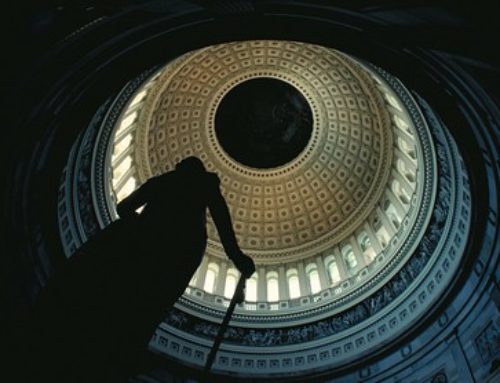The record-breaking hurricane season of 2005 destroyed thousands of lives and left Americans wondering out-loud about the effectiveness of federal programs designed to respond to and recover from such disasters. After last year's storms, the poorly designed federal flood insurance program was bankrupted and has been steadily borrowing money from the federal Treasury to pay off claims.
The National Flood Insurance Program was created by Congress almost four decades ago to provide Americans with some insurance to cover flood-related losses and help limit future flood damage, but was also supposed to generate enough federal revenue to cover its own expenses. Over its life, however, it has become abundantly clear that the flood insurance program is a fiscal fiasco. When Katrina hit the Gulf Coast, the program was already $200 million in the hole to the Treasury. In past years, such borrowing occurred but debts were repaid as premiums were paid in.
But after years of barely keeping its head above water, the federal flood insurance program has gone under for good. Current estimates assume that the Federal Emergency Management Agency (FEMA) will pay out $23 billion in flood insurance claims for Hurricanes Katrina, Rita, and Wilma, all of which will have to be “borrowed” from the Treasury. This will surpass all combined previous payments over the program's entire history. When you consider that the program takes in only $2 billion each year in premium payments, simple arithmetic says that even without interest it would take more than 11 years of every dime of premiums going into the Treasury to fill in this massive fiscal hole. That would mean no new storms and no new flood claims for the next 11 years. Yeah right, and the Dallas Cowboys are going to win next weekend’s Super Bowl.
They say fools rush in where angels fear to tread. That's not to say that the insurance industry are a bunch of angels, but they have avoided providing costly, unpredictable flood insurance while the federal government foolishly jumped into the business in 1968. But unlike private insurance—where policyholders pay premiums that cover costs in good years and bad—the federal flood program could always count on Uncle Sam for a bailout. The result is a very healthy subsidy to policyholders. To make matters worse, rates aren't commensurate with risk, so, the price you pay after your house is flooded once, twice, three times is the same as if it had never flooded at all. That's certainly not the way any other insurance works.
One of the biggest consequences of federal flood insurance is that it has helped fuel the coastal building boom. Before 1968, coastal homebuilding was somewhat constrained because nobody wanted too much tied up in a house that might not survive the next hurricane. Now that the federal government will pick up the tab for rebuilding (up to $350,000 for house and contents), bigger houses are showing up in more perilous places. As a result, taxpayers are spending ever more trying to protect property on the nation's coasts. Paying for flood insurance claims and disaster relief has created a vicious cycle of waste.
The federal flood insurance program doesn't just need its tires kicked, it needs a new engine. The program should be revised to include: collecting premiums that finance expected annual payments as well as fund a catastrophic reserve; removing subsidies for properties that pre-existed the current flood insurance program; enforcing current laws and increasing the floodplain areas requiring coverage, both of which would increase program participation; and increasing use of disaster relief funds to mitigate future damage by making communities more flood/disaster resistant and flood-proofing, elevating, and relocating repetitively damaged properties.
By any measure, last year's storm season was record-breaking, with 27 “named” storms, 15 of which were hurricanes, to say nothing of the loss of life and property. But, while 2005 was exceptional, weather scientists tell us that we're in the midst of a 15-year cycle of increased hurricane activity. It's surely time to fix this flood insurance thing before it bites us in the wallet again, and we have to start by getting the disincentives and incentives right. People that live in high risk areas need to know the risks and pay a fair share to the flood insurance program, and need to be encouraged to make themselves and their property less vulnerable.
Reforming the flood insurance program would go a long way toward reorienting our nation's floodplain policies, and simply throwing money at the problem is not the answer. One way to show last year's hurricane survivors the proper respect is to fix this program, make it fiscally sound, and ensure that it doesn't create more problems than it solves. That way, the flood insurance program will still be around the next time catastrophe strikes.







Get Social